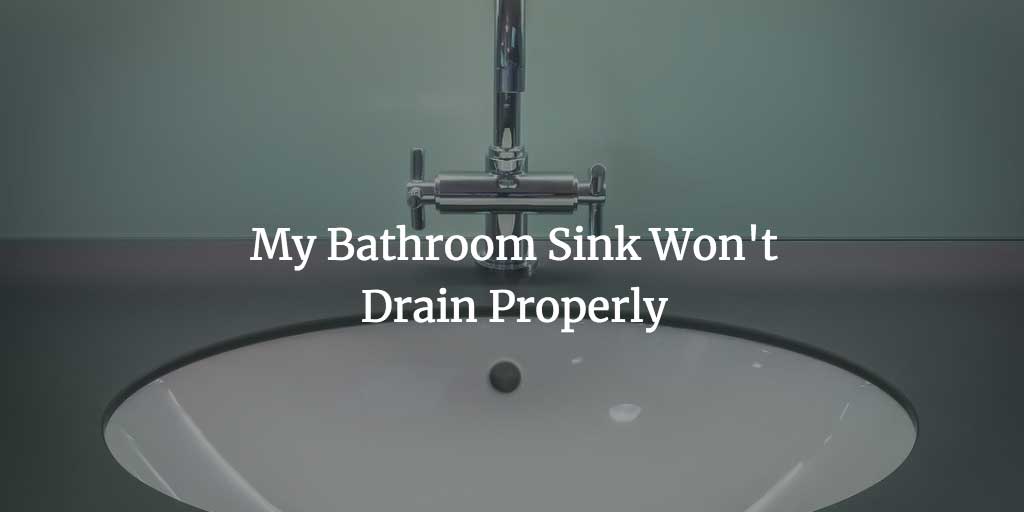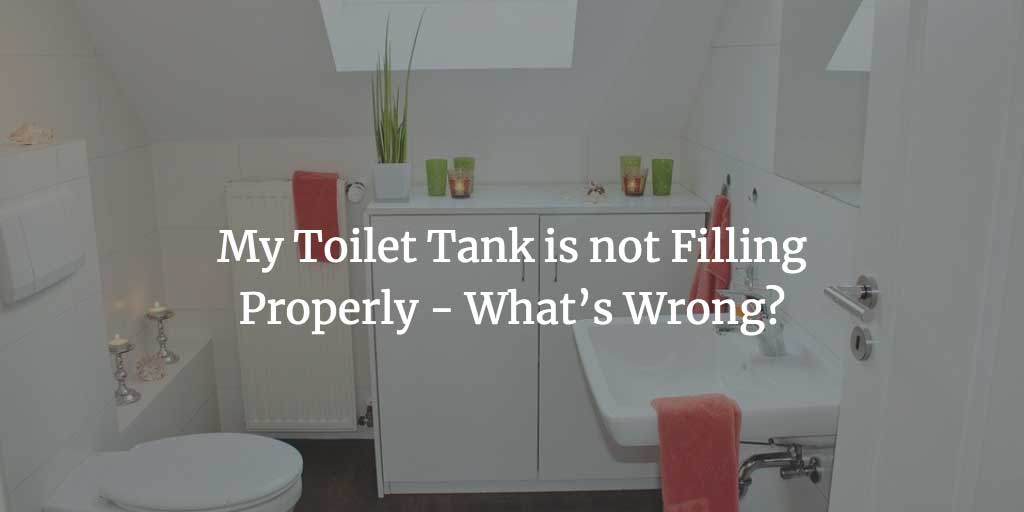Bathroom sinks often have clogged or slow-moving drains, this presents itself as the bathroom sink won’t drain properly. While it’s usually no cause for alarm, a slow draining sink can be quite annoying. The following will teach you how to unclog a bathroom sink that will not drain properly.
Luckily, it’s something you should be able to deal with on your own. Apply a bit of handy work, and soon you’ll be able to enjoy your bathroom routine without a soapy swamp appearing in your sink.
Contents
Solution 1: Check the Bathroom Sink Stopper
Since we use our bathroom sink to brush our teeth, shave, etc., foreign objects can build up on the sink stopper. All that grime and hair that goes down the drain can eventually lead to a slow draining sink.
Try lifting the stopper—it may come out easily. If you can’t take it out with your fingers, check whether there’s a pivot rod nut on the drainpipe right under the sink.
Unscrew the nut and remove the pivot nod. Use pliers if you can’t unscrew it with your fingers. You should be able to remove the stopper with your fingers after you remove the pivot rod.
Then, you can use a wire to remove the gunk. Bend it in a right hook to make it more efficient. A short electrical wire or light-duty clothes hanger will do. If you didn’t have to remove the pivot rod, simply put the stopper back in place after you fish out the hair.
If you did have to remove the pivot rod, put the stopper back in place first and then reinsert the rod. You’ll need to make sure the rod is aligned with the slot in the stopper. When you put it back in place, screw the nut back.
To check whether the clog is gone and to clear out any remaining soap scum, run hot water down the drain. You’ll need to check the pivot rod nut as well. If you see a leak, tighten the nut with pliers.
Solution 2:Plunge the Slow Draining Sink
Run water until it pools. The plunger needs about two inches of water to be able to apply pressure on the clog. The process is pretty straightforward: place the cup over the drain hole and start plunging. The problem is solved if the water starts to drain normally after a couple of plunges.
Solution 3: Use a Drain Snake
If the plunger doesn’t work, using a drain snake is your next best bet. Grab a rag as well. Insert the drain snake into the sink drain. Feed the cable into the drain slowly. Once you feel a stop, it means you’ve reached the clog.
Use firm but gentle pressure to push the snake through the clog. To avoid making a mess in your bathroom, hold the cable with a rag to clean the sludge as you retract the snake.
Solution 4: Use a Drain Cleaner
If you don’t have any plunging tools in your house, you may be able to clear your slow-draining sink with natural cleaners or chemical cleaners. Make sure to remove any standing water from the sink before you start. There are a couple of ways you can do it:
- Boil a kettle of water and add a bit of liquid dish soap. Slowly pour the mixture down your bathroom sink drain. This is the best solution for greasy clogs.
- Pour half a cup of baking soda down the drain. Then, pour half a cup of vinegar down the drain. Let the solution sit for a while—at least one hour. In the meantime, boil a kettle of water. Pour the water slowly down the bathroom sink drain. After you have done that, don’t use the sink for at least ten minutes.
- If you don’t have any vinegar, or you want to try a quicker solution, baking soda and water may suffice. In that case, you can let the baking soda sit for ten minutes instead of an hour, but everything else is the same.
- For this one, you’ll need half a cup of borax, half a cup of vinegar, and four spoons of salt. After you pour these ingredients down the drain, boil a kettle of water and pour it there as well. Let everything sit for a couple of hours before it clears. When the sink clears, rinse it with hot tap water.
- Buy a chemical drain cleaner at your local hardware store. Each chemical cleaner should have the instructions printed on the label. You’d want to avoid pouring abrasive chemicals down the drain if you can, so this should be your last option. It may be a good idea to put on a mask and a pair of gloves for this one.
Solution 5: Clear the Sink Overflow
The sink overflow doesn’t just prevent water from spilling over. When the sink is filled with water, it also allows air into the drain. The air helps the water drain faster. But, build-up and debris can end up in the overflow.
To clean it, you need a funnel, a pipe cleaner, and a cup or two of boiling water. Feed the pipe into the overflow opening. Push it in and out to break up the clog.
Use the funnel to slowly pour the boiling water into the overflow opening. It should be able to flush out any remaining debris. If it doesn’t work on the first try, repeat the step a couple of times.
If there’s an unpleasant smell coming out of the overflow, boiling water may not be enough. In that case, use the baking soda and vinegar method from step 4.
Solution 6: Unclog out the Drain Trap
If none of the previous steps work, the problem may lie in your drain trap. You can find the drain pipe under the sink. It’s usually has a “P” or “U” shape. Place a bucket under the drain pipe. Loosen the ring and remove the drain trap.
This could get a bit nasty, so you should take the drain trap somewhere outside to clear any debris you find inside it. Then, put the drain pipe back in its place and run water to see if it worked.
If it hasn’t, remove the drain trap again. But, this time, we need to bring out the drain snake again. Feed the cable into the pipe slowly. If there’s anything in the snake’s way, gently push against it. Once you hit the clog, start snaking it. When you’re done snaking, put everything back in its place and run water to see whether you solved the problem.
Solution 7: Call a Plumber When a Bathroom Sink Won’t Drain Properly
Just like with any other plumbing problem, a slow draining sink may be a sign of a bigger, underlying issue. And, such problems don’t have a DIY remedy. If none of the steps above worked, it’s time to throw in the towel and call a plumber.
If you need to call the plumber, it doesn’t mean all of your work was for nothing. Tell the plumber about everything you have tried so far. It may help them solve the problem faster.



